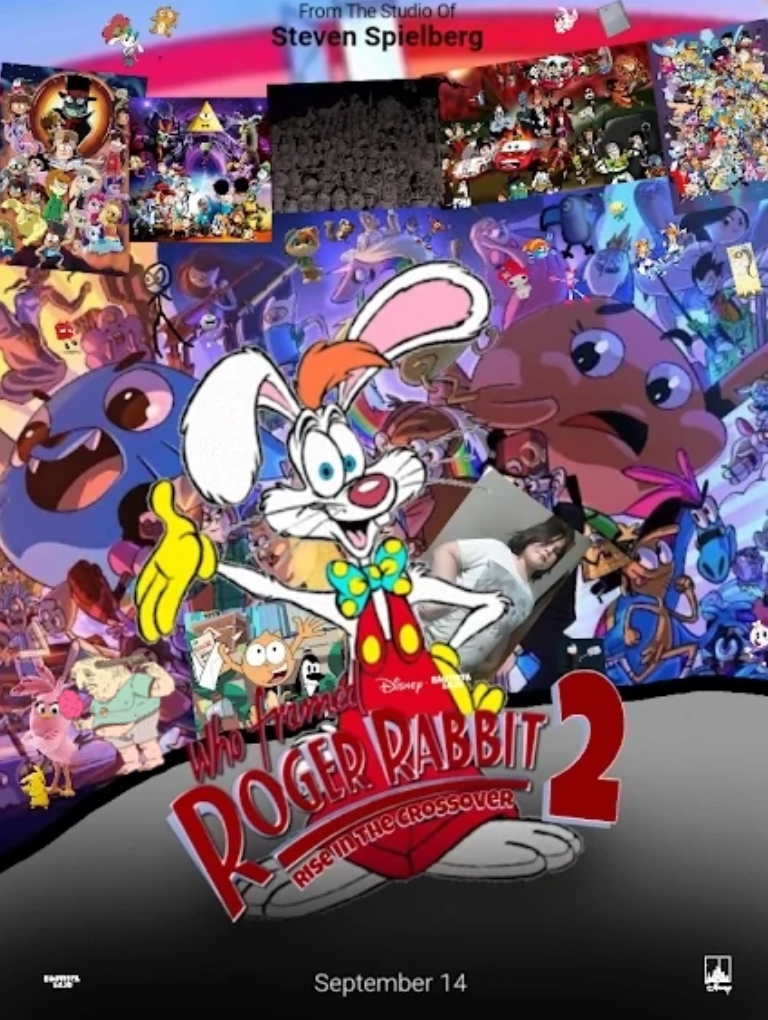Step into the whimsical world of Roger Rabbit, where live-action meets animation in a groundbreaking cinematic experience. Who Framed Roger Rabbit is not just a movie; it's a celebration of creativity and innovation that redefined the boundaries of storytelling. Released in 1988, this hybrid film directed by Robert Zemeckis brought together legendary animators and actors to create an unforgettable tale of mystery, humor, and heart.
This article dives deep into the untold secrets behind the making of Who Framed Roger Rabbit, exploring the magic of animation, the challenges faced during production, and the lasting impact it has had on the film industry. From its vibrant characters to its intricate plotlines, discover how this beloved classic continues to captivate audiences worldwide.
The Making of a Toon Legend
In the bustling city of Hollywood in 1947, Eddie Valiant, portrayed by Bob Hoskins, finds himself reluctantly drawn into the chaotic world of Toons when he’s hired to investigate allegations against Marvin Acme. As a burnt-out private investigator with a disdain for cartoons, Eddie must navigate through both the human and animated realms to uncover the truth. His journey begins as he searches for evidence linking Acme to Jessica Rabbit, the sultry nightclub singer married to Roger Rabbit, one of Maroon Cartoons' biggest stars.
When Marvin Acme is found dead under suspicious circumstances, the case takes a darker turn. Roger Rabbit becomes the prime suspect, accused of murder despite his frantic protests of innocence. Desperate to clear his name, Roger enlists Eddie's help, leading them on a thrilling adventure filled with danger, laughter, and unexpected twists. Together, they delve deeper into the seedy underworld of Toontown, where reality blends seamlessly with imagination.
The collaboration between Eddie and Roger highlights themes of prejudice and acceptance, showcasing how even those perceived as different can work together towards a common goal. Their unlikely partnership forms the backbone of the story, driving home messages about unity and understanding while delivering non-stop entertainment along the way.
A Leap Through Time: Animation Meets Live Action
Who Framed Roger Rabbit revolutionized special effects technology by seamlessly integrating hand-drawn animations with live-action footage. This innovative approach required meticulous planning and execution from director Robert Zemeckis and his team. Each scene was carefully choreographed to ensure that every movement of the Toons aligned perfectly with their real-world counterparts, creating an illusion so convincing that audiences were left spellbound.
Behind the scenes, animators worked tirelessly to bring Roger and other iconic characters to life. They utilized advanced techniques such as rotoscoping and motion capture to achieve lifelike expressions and fluid motions. Additionally, the use of blue screens allowed for greater flexibility during filming, enabling seamless interaction between humans and Toons without compromising visual quality.
This technical mastery set new standards for future films combining live-action and animation elements. It demonstrated the limitless possibilities within filmmaking, inspiring countless creators to push the envelope further in pursuit of artistic excellence.
Toon Town Mysteries Unveiled
At its core, Who Framed Roger Rabbit serves as more than just a whodunit; it critiques urban development trends prevalent in Los Angeles during the mid-20th century. By framing the narrative around the destruction of streetcar systems in favor of freeways, the film sheds light on historical events shaping modern cities today. Through clever dialogue and subtle symbolism, viewers are encouraged to reflect upon societal changes impacting daily lives.
Jessica Rabbit, Roger's glamorous wife, adds depth to the storyline with her complex persona. Her character challenges traditional gender roles, embodying strength and independence amidst adversity. Meanwhile, Roger himself represents vulnerability and resilience, reminding us all that imperfections make individuals unique and endearing.
Ultimately, Who Framed Roger Rabbit transcends genre conventions, offering profound commentary wrapped inside a delightful package of comedy and suspense. Its ability to entertain across generations speaks volumes about its timeless appeal and enduring legacy within popular culture.

